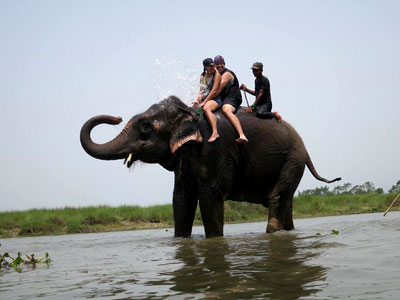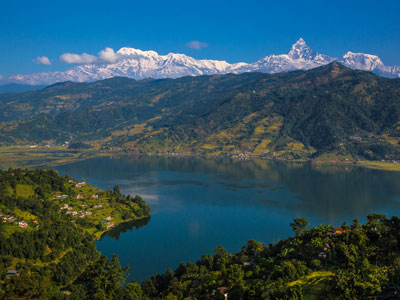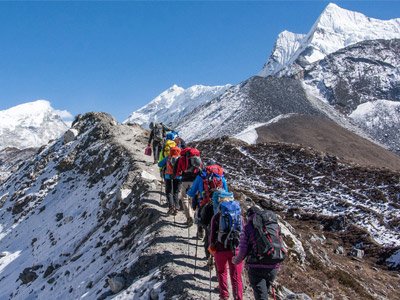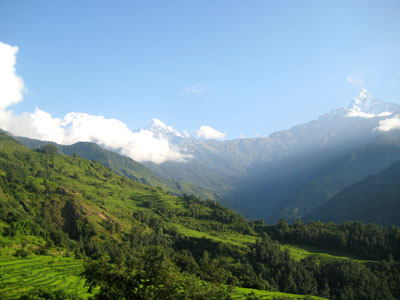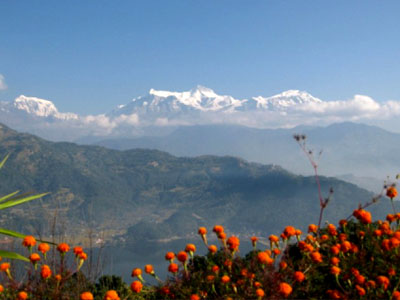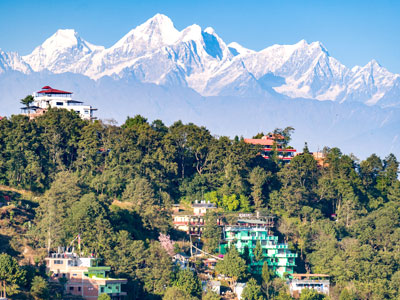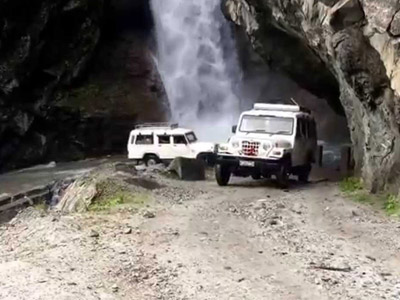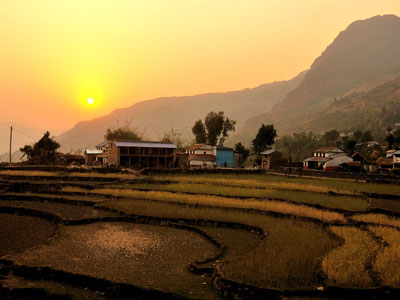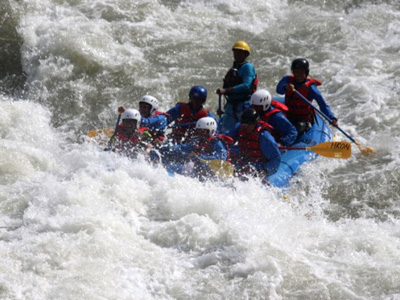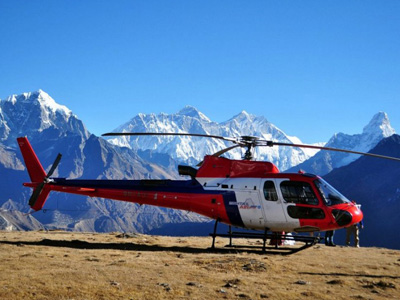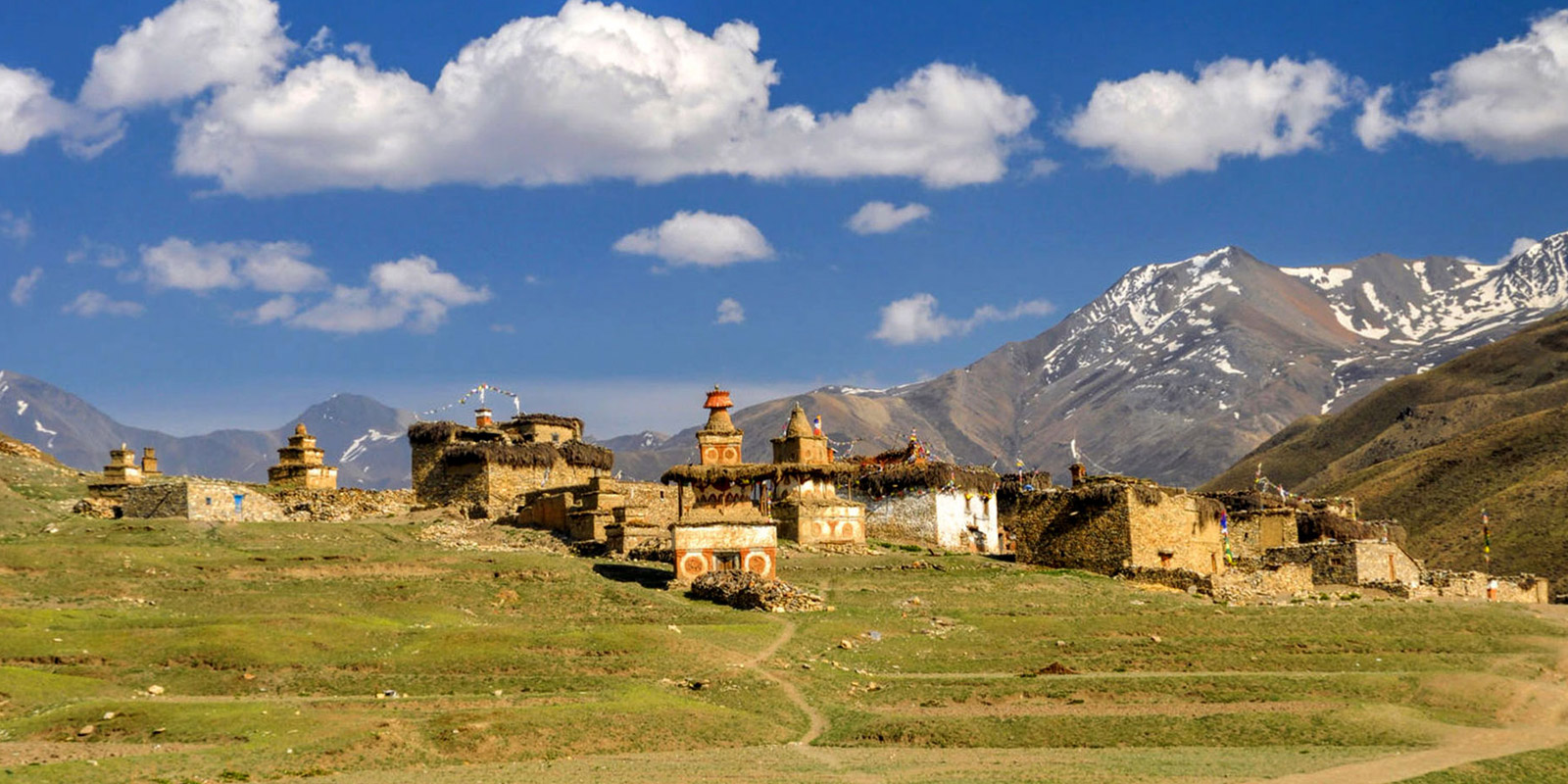
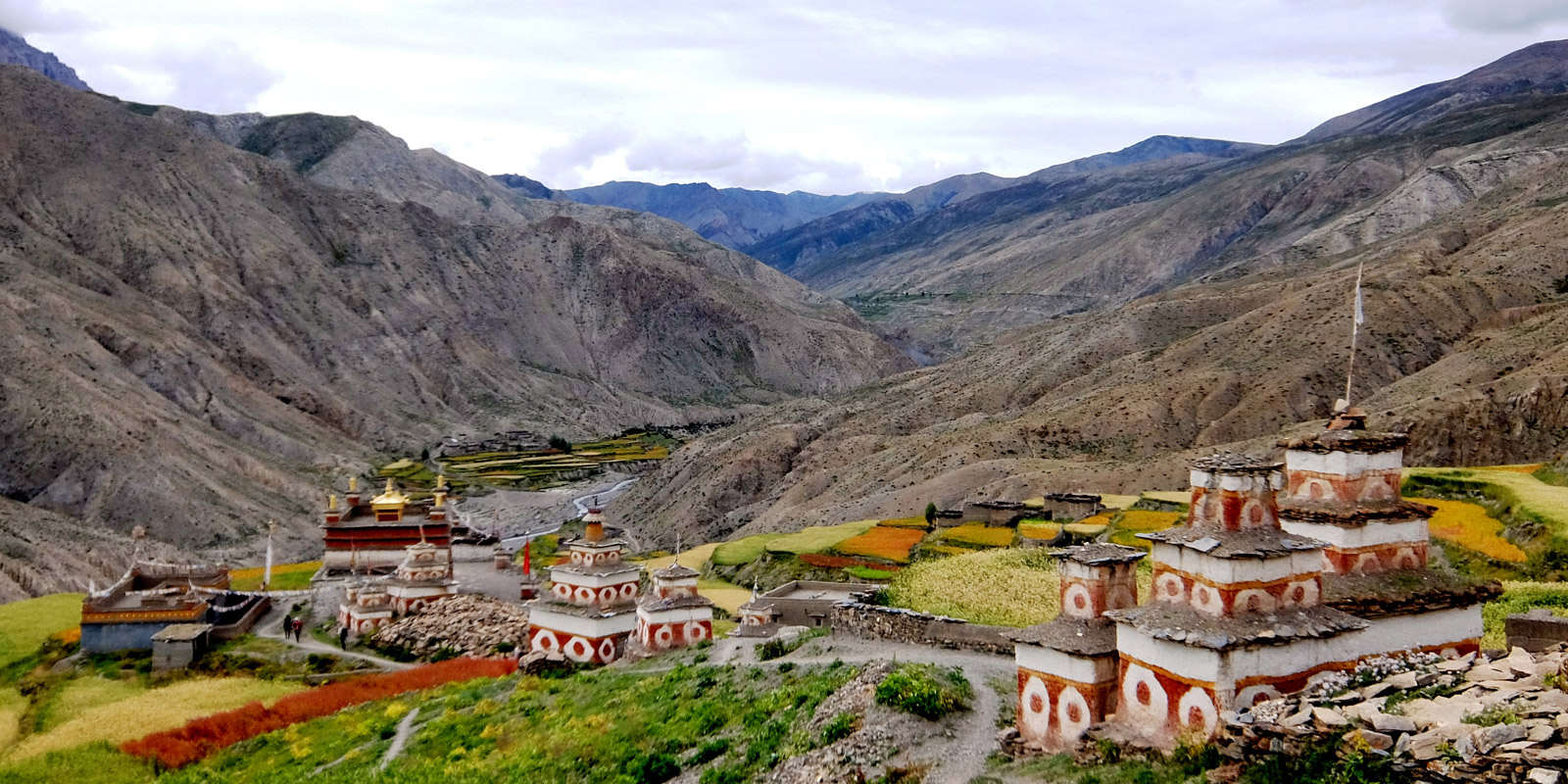
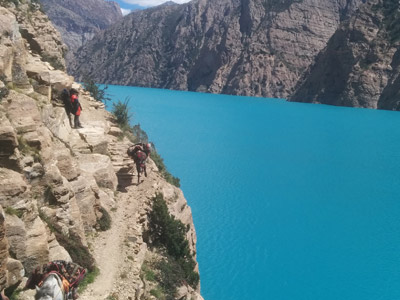
Upper Dolpo Trekking
Duration: 25 Days Trip Difficulty: Moderate
Trip Duration 25 Days
Destination Nepal
Group Size 1-12 People
Highlights of Upper Dolpo Trekking
- Upper Dolpo Trek is a unique trekking trail that let you explore the unexplored trekking region of Nepal.
- Challenging and adventures trekking in Nepal.
- Se-Phuksundo National park national park rich with flora and fauna.
- Tibetan culture and Buddhist monastery.
- Three high passes ie; Nagdolo La (5350m), the shey la (5010m) and Jeng la (5220m)
- Fascinating Himalaya scenery, snow covered wilderness, tranquil beauty of Shey Phoksundo lake, vivid culture and hospitality
Overview of Upper Dolpo Trekking
Upper Dolpo Trekking is a unique trekking trail that let you explore the unexplored trekking region of Nepal. Situated between Tibetan Plate and Dhaulagiri Massif, this fascinating trekking destination was restricted for the tourist before 1989. This trek into the mythical high lands flourished with fascinating Himalaya scenery, snow covered wilderness, tranquil beauty of Shey Phoksundo lake, vivid culture and hospitality of the inhabitants, lush green forest, Tibetan cultural villages and many more astonishing beauty of nature and culture. Trek to upper dolpo is a lengthy trek into the exotic trekking trail of upper dolpo region.
Upper Dolpo trekking is one of the adventures, challenging, less touristic, untouched trekking destination of dolpa district located at northwest of Mt Dhaulagiri. This trekking region culturally influence with Tibet culture. This region lies in Se-Phuksundo national park so this is rich in flora and fauna with wildlife. Some places of this region still not explore yet , you have great chances to explore it. Natural beauty of this trekking trial is incomparable with other place. Trekkers have to take special permit from Nepal government with authorize tour and trekking company and guide is compulsory. Diversity of Nature, culture, tradition, makes this region unique which makes trekking memorable for life time.
Shey gumpa monastery is spiritual heart of upper dolpa through which trekker came by passing several Buddhist cultural villages, Phukusundo lake, and three high passes ie; Nagdolo La (5350m), the shey la (5010m) and Jeng la (5220m) where you spent acclimatization day. View of gorgeous Dhaulagiri range, unique Tibetan culture, Rare snow leopard, deep river canyons, pastures land and other typical places make this trekking remarkable. This region lies in rain shadow area of dhaulagari ranges that’s why nothing to worry about rain and can explore the region freely. Upper dolpo trekking trial is camping trekking that’s make you great trek experience which you remember throughout the life. Trekkers have to spend their journey above 4000 m on mountain deasert that’s why it’s cold at night and required high level of physical fitness for trekking.
Upper Dolpo Trek starts with a scenic flight from Kathmandu all the way to Nepalgunj and then ascending into the high lands of Dolpo region. The villages in Upper Dolpo are 4,300meters and above. It is here specifically that people still practice the pre-Buddhist Bon Po religion. This early sect was almost entirely replaced after Buddhist doctrine began to spread across Tibet in the 9th century. Commencing this traditional trekking trail will let you view the panoramic view of mighty Himalayas, beauty of nature and culture and the ancient Buddhist habitat at the high lands of Nepal.
Day 01: Welcome to Nepal
Welcome to Kathmandu Valley (1360m). Upon your arrival we assist you from international airport to our hotel. Enjoy welcome programs and rest overnight at hotel.
Day 02: Kathmandu sightseeing and trek preparation day.
After breakfast half day Kathmandu Valley sightseeing tour and then prepare for the trek. Overnight at hotel.
Day 03: Flight from Kathmandu to Nepalgunj.
Early morning scenic flight from Kathmandu all the way to Nepalgunj. Overnight at hotel.
Day 04: Flight from Nepalgunj to Juphal and trek to Dunai (2150m)
Today we fly a scenic flight from Nepalgunj all the way to Juphal (2,400m) and then trek to Dunai (2,150m). Overnight at camping tent.
Day 05: Trek from Dunai to Ankhe. (2660m)
Today we trek for 5-6hours from Dunai all the way to Ankhe (2,660m). Overnight at camping tent.
Day 06: Trek from Ankhe to Renje. (3104m)
Trek from AnkheToday we trek for 6-7hours from Ankhe all the way to Renje (3,104m). Overnight at camping tent.
Day 07: Trek from Renje to Phoksundo Lake (3600m)
Today we trek from Renje walking for 6-7hours all the way to Phoksundo Lake (3,600m). Overnight at camping tent.
Day 08: Trek from Phokusundo Lake from Phoksundo Khola (3507m)
Today we trek for 5-6hours from Phoksundo Lake all the way to Phoksundo Khola (3,507m). Overnight at camping tent.
Day 09: Trek from Phuksundo Khola to Phoksundo Bhanjyang (4402m)
Today we trek for 6-7hours from Phoksundo all the way to Phoksundo Bhanjyang (4,402m). Overnight at camping tent.
Day 10: Trek from Phoksundo Bhanjyang to Shey Gompa(4126m) via Kang La Pass(5151m).
Today we trek for 7-8hours from Phoksundo Bhanjyang Crossing the Kang La pass (5,151m) all the way to Shey Gompa (4,126m). Overnight at camping tent.
Day 11: Rest day in Shey Gompa.
Rest and exploration day at Shey Gompa. Overnight at camping tent.
Day 12: Trek from Shey Gompa to Namduna Gaon(4400m) via Saldang La Pass(4785m).
Today we trek for 7-8hours from Shey Gompa Crossing the Saldang La pass (4,785m) all the way to Namduna Gaon (4,400m). Overnight at camping tent.
Day 13: Trek from Namduna Gaon to Saldang (3903m)
Today we trek from Namduna Gaon walking for 4-5hours all the way to Saldang (3,903m). Overnight at camping tent.
Day 14: Trek from saldang to sibu(3942m)
Today we trek for 5-6hours from Saldang all the way to Sibu (3,942m). Overnight at camping tent.
Day 15: Trek from sibu to Jeng La (4369m)
Today we trek from Sibu for 4-5hours all the way to the foot of the Jeng La (4,369m). Overnight at camping tent.
Day 16: Trek from Jeng La to Tokyu gaon (4240m) via Jeng La pass (4845m).
Today early in the morning we start our trek walking 7-8hours from the Foot of Jeng La crossing the Jeng La pass (4,845m) all the way to Tokyu Gaon (4,240m). Overnight at camping tent.
Day 17: Trek from Tokyu Gaon to Dho Tarap (4090m).
Today we trek for 4-5hours from Tokyu Gaon all the way to Dho Tarap (4,090m). Overnight at camping tent.
Day 18: Trek from Dho Tarap to Serkam(3630m)
Today we trek for 6-7hours from Dho Tarap all the way to Serkam (3,630m). Overnight at camping tent.
Day 19: Trek from Dho tarap to khani Gaon (2550m)
Today we trek for 6-7hours from Serkam all the way to Khani Gaon (2,550m). Overnight at hotel.
Day 20: Trek from Khani Gaon to Tarakot (2281m)
Today we trek for 3-4hours from Khani Gaon all the way to Tarakot (2,281m). Overnight at hotel.
Day 21: Trek from Tarako to Dunai(2052m)
Today we trek for 4-5hours from Tarakot all the way to Dunai (2,052m). Overnight at hotel.
Day 22: Today we trek from Dunai to Juphal (2404)
Today we trek for 3-4hours from Dunai all the way to Juphal (2,404m). Overnight at hotel.
Day 23: Flight from Juphal to Kathmandu via Nepalgunj.
Early morning scenic flight from Jhupal to Nepalgunj and then after lunch fly back to Kathmandu. Overnight at hotel.
Day 24: Rest and shopping day in Kathmandu.
Leisure day at Kathmandu Valley. Enjoy exploration and shopping around Kathmandu City. Overnight at hotel.
Day 25: Final Departure. Farewell!!
Our company representative drove to you international airport.
Reviews on Upper Dolpo Trekking
Submit your review | |
1 2 3 4 5 | |
Submit Cancel | |
Interested in this package? Make free inquiry
Reviews on Upper Dolpo Trekking
Submit your review | |
1 2 3 4 5 | |
Submit Cancel | |
